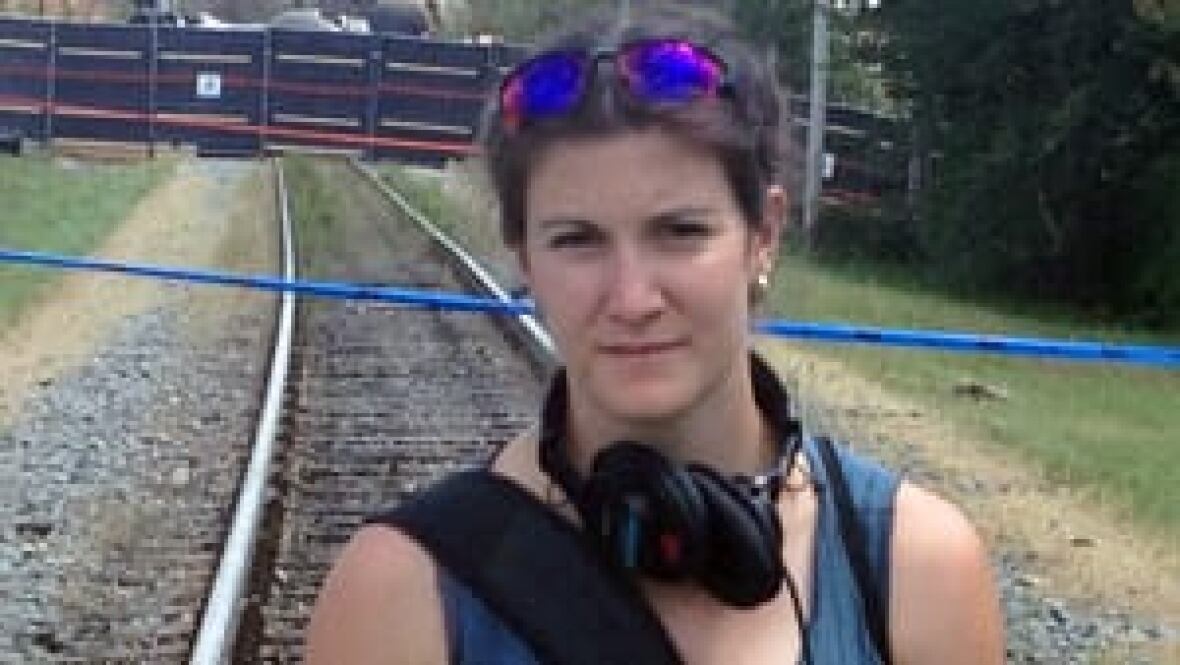Inside Lac-Mégantic disaster zone: 'Everything is just smashed together'
Rail cars 'look like toys' piled in centre of devastated town
Journalists were allowed on Tuesday to get closer to the site of the train derailment and explosion in Lac-Mégantic, Que., than they have been since the July 6 disaster.
The remains of 38 people have been recovered, while 12 people are still unaccounted for. Workers continue to sift through DNA samples provided by their families in order to identify the remains. On Tuesday, a twelfth victim was identified and their family was notified.
CBC staffers were among those allowed to enter an area called the "yellow zone," just outside the tightly restricted epicentre of the blasts.
From there for the first time they could see for themselves the devastation caused by the immense fireball that ripped through the centre of the town.
What they saw is described here in their own words:
Peter Tardif
"We all got on a bus this morning – a couple dozen journalists and a few select cameramen. We are all in this bus and everyone is talking, a lot of people just chit-chatting. At some point, we turned down another street and it got very quiet. It was if we all just realized where we were headed.

"There are some wagons that are 200 or 300 metres away from the big pile. You can just imagine the force with which they were thrown…Everything is just smashed together. It looks as if someone just placed them there. It's very strange.
"We walked down to Frontenac Street and you can see all the carnage of the trains behind all the work that is being done.
"It's chaos — there's piles of brick and rebar everywhere and then there's these neat little piles where these backhoes have placed the debris. It seems like an impossible task because there is just so much of it.
"You can actually see the water from Frontenac Street and that's where it hits you. We see this water and there's actually a war memorial there for the soldiers from World War I and II. This in itself looks like a war zone. You wonder if there's going to be another memorial here to mark all those that died here.
"I'm just now putting my finger on the utter terror people must have felt. Everything is just flattened. The ground is black and you walk a bit farther where there was no fire and it's green again.
"You almost feel as if you were standing six feet away from it, you would have been safe."
Willy Lowry
"One of the things that struck me immediately was – I saw all the images on TV, the aerial shots of the scene – but when you're up close, you see just the mountain of train cars piled one on top of each other. They almost look like inflatable toys piled up there.

"We were allowed to walk along the esplanade along the lakeshore. The force of the explosion actually shattered some of the boulders lining the lake. It melted some of the lamp posts. The metal on the posts is just drooping into the most bizarre shapes. We picked a piece up and it looked like a Hershey's Kiss. This is 200 or 300 metres from the actual site. It gives you a real sense of just how powerful and devastating these explosions were.
"It really makes me wish, and people who live here have told me this, that I could have seen it before. We were able to see a bit of Rue Frontenac, which we hadn't been able to see before. It's really quite a beautiful little Quebec town. There are turn-of-the-century buildings and it's a really cute little village. I just wish that I could have seen it before all of this."
Thomas Daigle
"I think what struck me is how much debris is left down there. It covers at least a football field-sized area. There's burned out cars. There's little pieces of metal. It's scattered all the way down to the water three blocks form the railroad.

"We're told there's about 50 people working down there, with police and firefighters and the TSB investigators and private contractors, but there's a lot of coming and going. What police have been telling us that it's very hot and that is making it hard to work. I can tell you from being there, that it's very hot. We're in the middle of a heat wave. There's a wall of heat. You also smell it. Someone described it as an old furnace smell with all the oil that seeped into the soil.
"Having been here a week and a half, I didn't really get a sense of what it looked like down there and how bad it really was. This was the first time I really got the sense of how big and wide the destruction was… There's a part of downtown that we saw that still looks perfectly normal. It's hard to see that and see, just down the street, an entire part of downtown wiped out."
Marika Wheeler
"The last place the police officers brought us to was probably the most striking because the devastation was the most evident there and it was the closest to us.

"Just the task of decontaminating the place is incredible. The magnitude of rebuilding is enormous.
"It's amazing just how discriminate it was. You could see the mark of the heat and fire. It was really striking. You're looking at that and you're thinking, ‘Some people got away.' I've spoken to people who were on the terrace of the Musi-Café and they got away. They were able to run away from that devastation and it's remarkable that anyone got away.
"It's almost like the emotion of everything I've heard here resides in a new place in me after seeing that. After seeing it, everything else is a little sharper. All the stories are a little sharper."
Follow CBC Montreal and CBC Quebec journalists in Lac-Mégantic on Twitter: Willy Lowry @willy_lowry, Thomas Daigle @thomasdaigle and Marika Wheeler @marikaCBC
